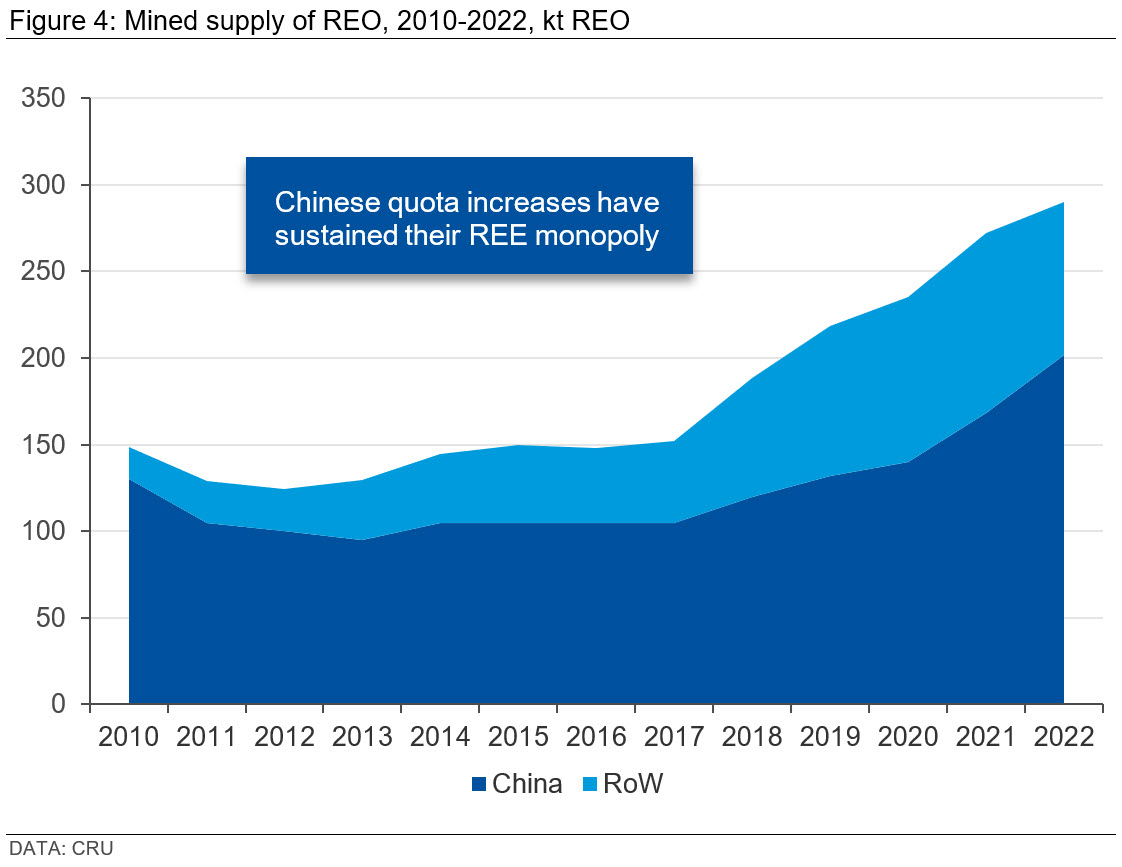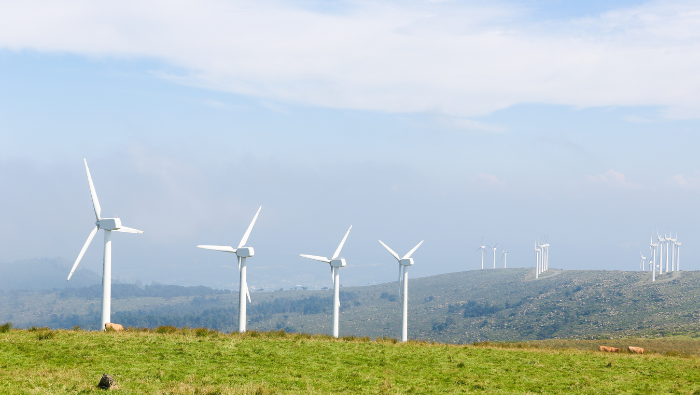Rare Earths Part I: REE 101
Two themes we expect to be fundamental during the 2020s are green transition and geopolitical instability. Electric vehicle (EV) uptake will grow, wind turbines will be installed at ever increasing rates, and Sino-Western relations will remain a ‘hot potato’. One commodity group in particular, the rare earths, will be impacted significantly from these themes. But what are rare earths? Where do they come from – and why do they matter?
If you read articles by any of the major news outlets on this subject, you have probably encountered reports citing a Chinese monopoly on the market and the need for a diverse value chain. All of this is true and does raise the eyebrow, but context is needed regarding the rare earth element (REE) markets. This first part in our REE insight series does exactly that.
The REEs are classified according to their atomic weight:
The rare earth elements (REE) consist of the 15 lanthanide elements, with atomic numbers 57 to 71, with the addition of yttrium and in some cases scandium, for a total of 17 elements. Sub-groups exist within the REE group based on their atomic numbers, namely light (LREE), medium (MREE), and heavy (HREE) – with LREEs being the more common of the REEs and HREEs being less common and typically more difficult to separate.

They are considered as a group because they are found (in minerals such as monazite and bastnaesite), mined and processed together, up to the stage of a rare earth oxide (REO) concentrate. Then, due to their similar physical and chemical properties, they must be separated (akin to cracking crude oil) via multi-stage solvent extraction into the individual elements for their different end uses.

Supply and demand: China, Chinese magnets, and more China
Before delving into the supply of REEs, some context around demand is needed. The 17 REEs have their uses, but a select group are particularly important – neodymium (Nd), praseodymium (Pr), dysprosium (Dy), and terbium (Tb). These ‘VIP’ REEs are used in the production of permanent magnet alloys, with neodymium-iron-boron (NdFeB) magnets the most common and arguably the most efficient. Such permanent magnets are crucial for the green transition, widely used in electric vehicles motors and in wind turbines.
In 2021, total rare earth oxide (REO) demand was ~175 kt, that’s all the rare earth oxides. Of that ~175 kt, less than 30% was made up of REO in permanent magnets. However, looking at the REO market in terms of value is markedly different, as 30% of volume of demand represents over 45% of the total value of the REO market – this is where we see the importance of the ‘VIPs’.

Both the share of volume and value of REO demand held by permanent magnet end uses is expected to continue to grow into the 2030s, as so-called ‘basket problem’ of REEs intensifies – read more on this here.
In 2022, CRU estimated total mined supply of REO to be in the region of 280 kt. China currently dominates both global mined REO production as well as separation capacity and magnet production. Currently, ~70% of mined REO supply comes from China, with this number increasing to >90% for separated supply.
However, since 2011 ex-China projects have come online, namely MP Materials’ Mountain Pass mine and Lynas’ Mt. Weld mine, with European and North American governments seeking to reduce dependence on Chinese supplies. Several further ex-China projects are entering the latter stages of development and are expected to come online in the 2020s. Even with the emergence of exChina supply, China has room for growth in its mined supply and will continue to dominate the REE market in the 2020s.

The green transition: why REEs matter
EVs and wind turbines have a key role to play in the energy transition and, as a result, so do the ‘VIP’ REEs (Nd, Pr, Dy,Tb), owing to their use in the permanent magnets that will power these technologies. Over the next decade we will see rapid uptake in EVs and wind energy, leading to significant growth in permanent magnet demand, and therefore significant growth in ‘VIP’ REE demand.
Such gains in demand are set to drive the NdPr market into a prolonged deficit in the medium-term.

So, surely the market just needs more supply? True, but this is easier said than done. The REE market is among the opaquest in the world and suffers the fate of being monopolised, which has ramifications when raising the debt needed to build new REE mines. The opacity and volatility of the REE market, along with relatively small total market value, has in recent years pushed potential financiers away, driving the expected ‘VIP’ REE deficit. This will need to change if sufficient supplies are to come online to address the deficit.
Luckily, CRU is at hand to help provide clarity in such a fast-moving market. We are market leaders in terms of vital knowledge and insights into the REE market, with our data used to support the funding of REE projects in recent years. Get in touch to discuss any of the topics raised in this Insight, or if you would like to find out more.
Explore this topic with CRU





